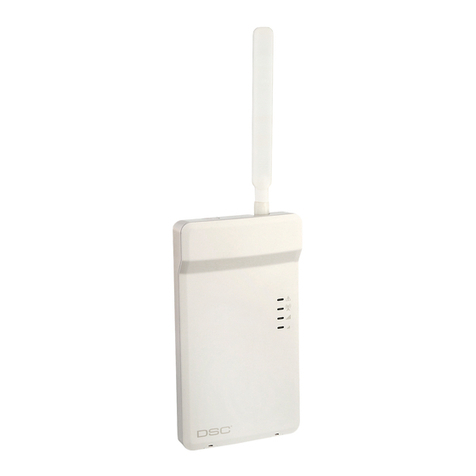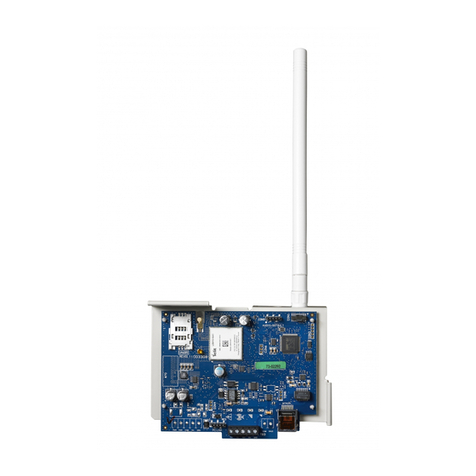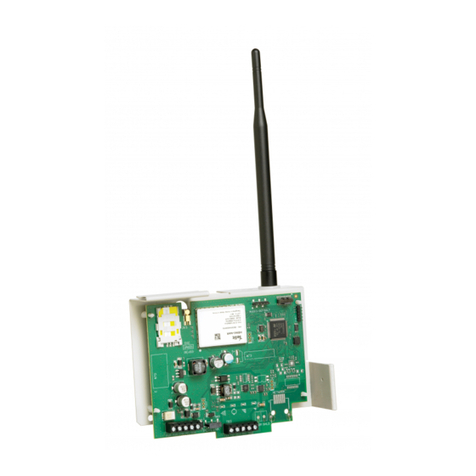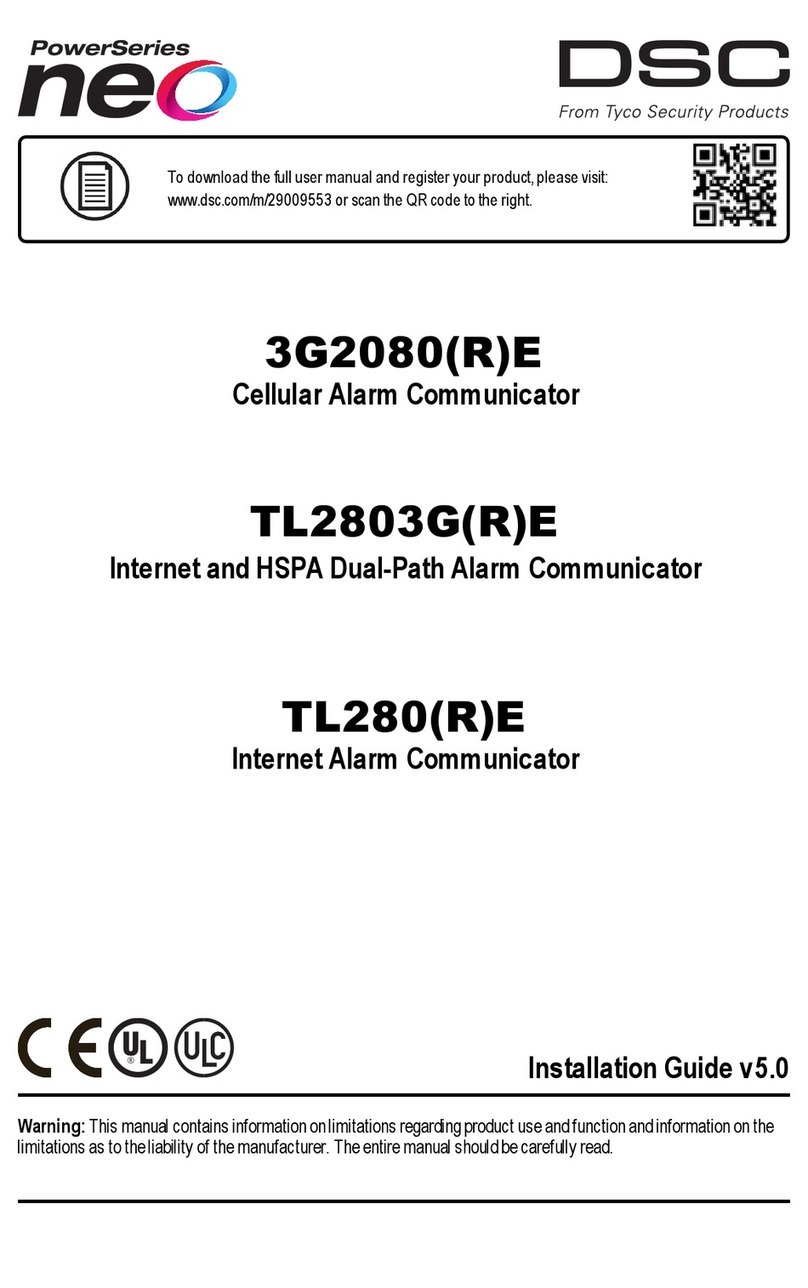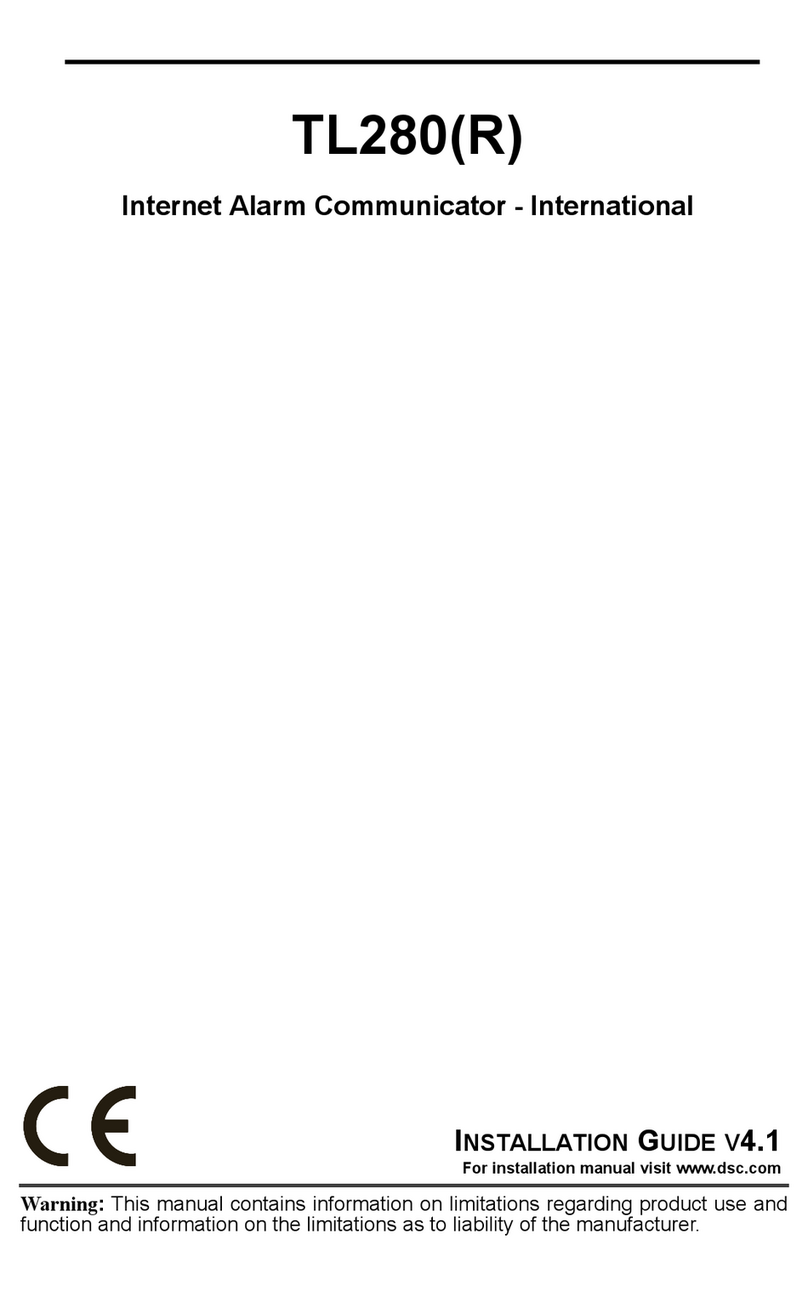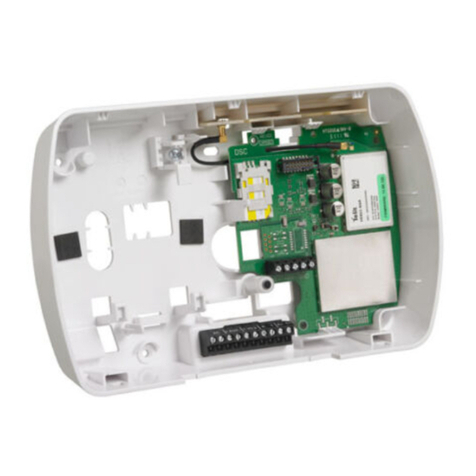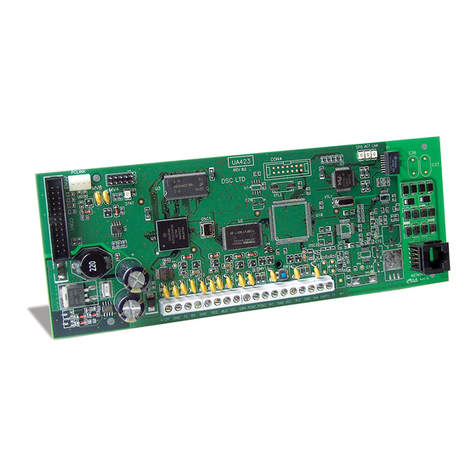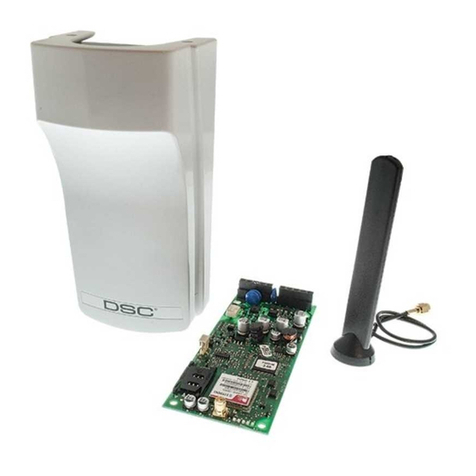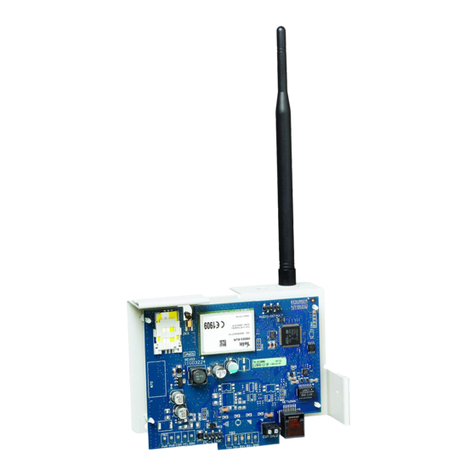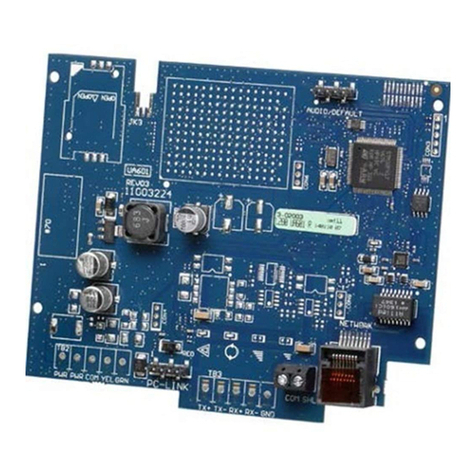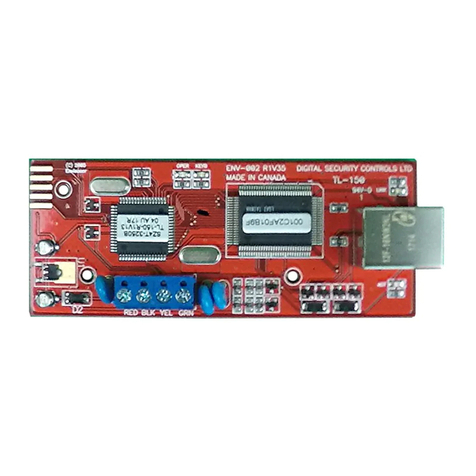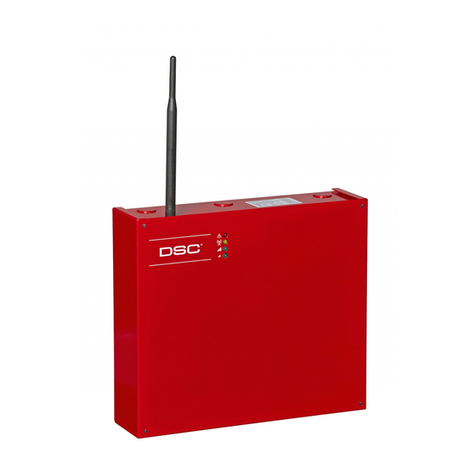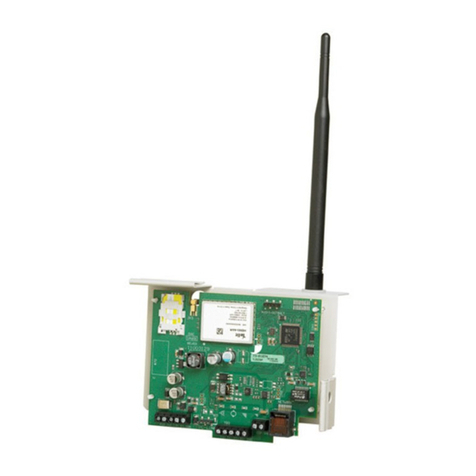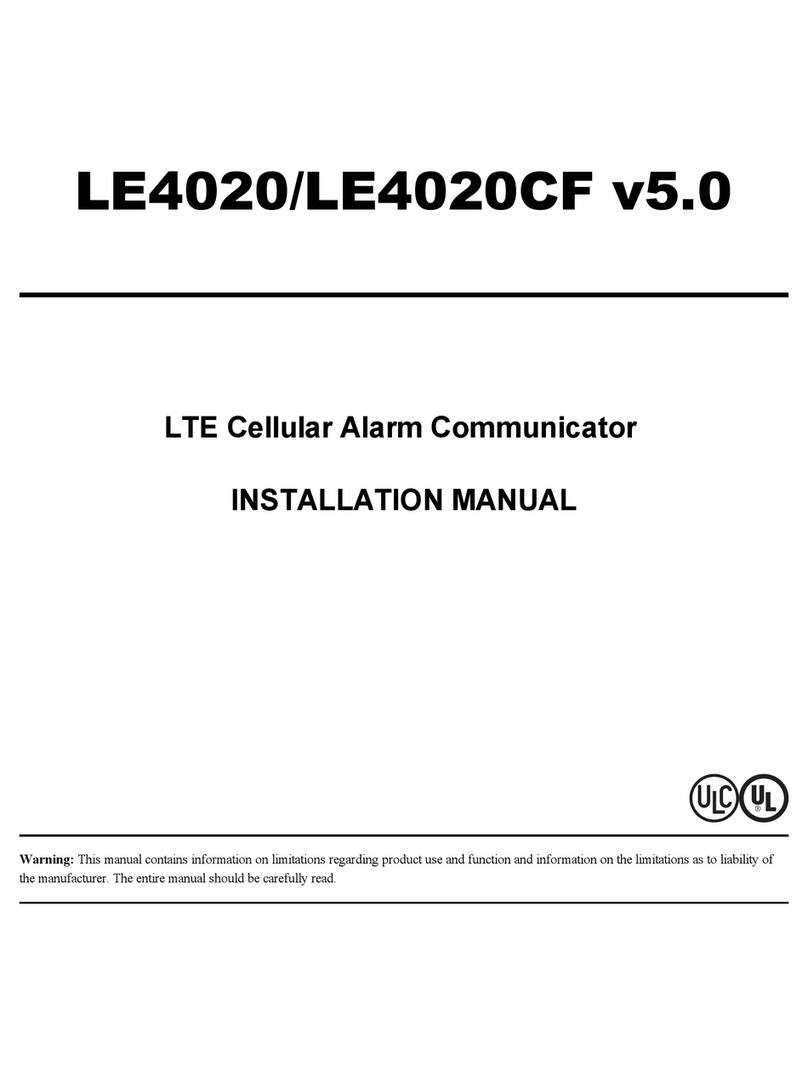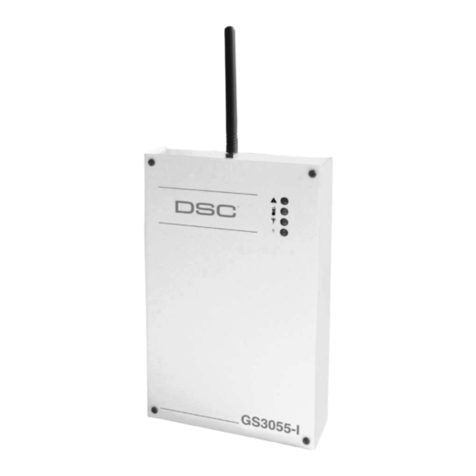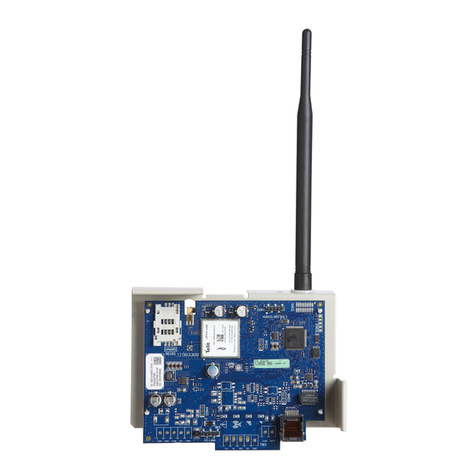
IMPORTANT
The equipment is fixed, wall-mounted and shall be installed in the position specified in these instructions (see Figure 1: Parts).
The equipment enclosure mustbe fully assembled and closed, with all the necessary screws/tabs and secured to a wall before
operation. Internal wiring must be routed in a manner that prevents:
- Excessive strain on wire and on terminal connections
- Loosening of terminal; connections
- Damage of conductor insulation
WARNING: Never install this equipment during a lightning storm!
Instruct the end-user to:
- Not attempt to service this product. Opening or removing covers may expose the user to dangerous voltages or other risks.
Any servicing shall be referred to trained service persons only.
- Use authorized accessories only with this equipment.
Do not dispose of the battery in fire or water. Disposing of the battery in a fire will cause rupture and explosion.
Do not dispose of the waste battery as unsorted municipal waste. Consult your local regulations and /or laws regarding recyc-
ling with regard to this lead-acid battery. Doing so will help protect the environment. Some of the materials that are found within
the battery could become toxic if not disposed of properly and may affect the environment.
NOTICE TO USERS, INSTALLERS, AUTHORITIES HAVING JURISDICTION AND OTHER INVOLVED PARTIES
This product incorporates field-programmable software. In order for the product to comply with the requirements in the Stand-
ard for Control Units and Accessories for Fire Alarm Systems, UL 864, certain programming features or options must be limited
to the specific values or not used at all as indicated below.
Program Feature or Option Permitted in UL 864 (Y/N)? Possible Settings Settings permitted in UL 864
Supervision Yes 5 minutes /60 minutes 5 minutes (see note below)
Inputs/Outputs Yes Fire/Burg signals Fire related signals only
SMS Remote Control No Enable/Disable Disable
NOTE: This product has been tested in accordance with UL 864 9th edition. According to this edition of the standard, the super-
vision window for reporting single-technology communicator trouble shall be set to five minutes. However, the product can be
installed in accordance with the requirements of NFPA72 2013 edition, which allows for a 60-minute supervision window.
Introduction
The 3G4010 is a cellular communicator that sends alarm system information to a Sur- Gard System I-IP, II, III, IV or 5 receiver
through a 3G (HSPA) or 2G (GPRS) cellular network. This cellular communicator can be used with UL/ULC Listed compatible
control units, as indicated in the manufacturer's installation instructions.
NOTE: The 3G4010 is designed to work with the Contact ID communication format as described in the SIA DC-05 standard
and the SIA DC-03 standard for 300 baud. Before completing the field installation of the alarm monitoring system please
ensure communication with the supervising central station is successful by sending several events and getting confirmation that
they have been received.
Features
lDual-band UMTS/HSPA; Quad-Band GSM/EDGE Radio
lAdvanced Carrier Selection
lBi-color Wireless Signal Strength Indicator
l3G (HSPA) / 2G (GPRS) / Internet communication with Sur-Gard SG-System I-IP / II / III / IV / 5
lCompatible with 4-digit or 10-digit Contact ID communication format as described in SIA DC-05 Standard and the SIA DC-
03 standard for 300 baud. Example of suitable compatible alarm panels:
DSC Models PC1864, PC1832, PC1616, PC4020.
lPanel Transmission Monitoring for up to four phone numbers
lSimulates landline
lSwitches automatically to the 3G (HSPA) or 2G (GPRS) network in the event of landline trouble (e.g.,line down)
lFour Programmable (NO/NC/SEOL) Inputs
l12V 1.2Ah battery (optional, not included)
lCase Tamper Output
lLandline overvoltage protection
lFour Programmable Outputs
lDLS support for status, firmware updates and remote debug enable
lRemote Firmware Upgrade
lRemote Diagnostics
lPanel Format Detection
4
